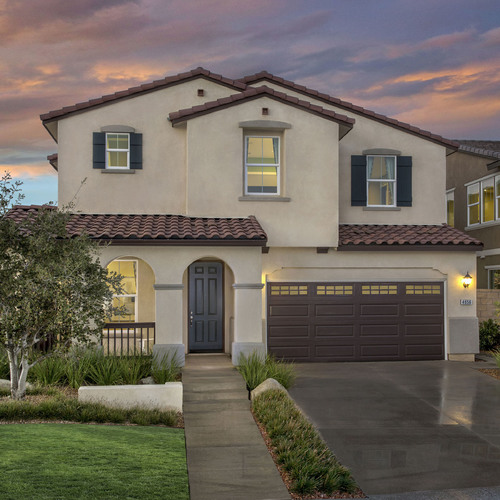
More than a dozen green technology firms will be getting a boost over the coming months as they show a broader audience how they can help the Los Angeles region meet its net-zero energy goals.
The U.S. Green Building Council-Los Angeles Chapter (USGBC-LA) calls the initiative the Net Zero Accelerator. The idea is to pair companies that have shown promise in such areas as energy efficiency, waste diversion, and water conservation with building owners who have already indicated they’d like to participate with pilot studies.
USGBC-LA originally had thought it would select 10 new technologies but ended up with 13. Most are from California, but others are based in Hawaii, Texas, and even Great Britain. They represent a variety of specialties. Nearly 70 companies applied.
The two dozen organizations that have shown interest in pilot programs are equally diverse. They include both public and private interests.
The USGBC-LA said in a news release that it believed the accelerator is the first effort of its kind. Neal Anderson, the accelerator’s director, said in a prepared statement that the effort is aimed at helping the participating technology companies overcome market barriers that would normally impede growth.
“This is an exceptionally compelling group of companies bringing diverse solutions to market that address our shared goals,” Anderson’s statement said. “We’re excited to help them overcome market-entry barriers often encountered by new technologies, and pair them with the green building experts and significant pilot sites throughout the Los Angeles region to see results before the new year, and keep the momentum rolling,”
Here’s a partial list of the companies that will be participating (there’s more information available at the USGBC-LA website).
- Angel City Lumber. Created in 2015, this organization nabs downed trees and turns them into usable lumber before the timber can clog up the city’s waste stream. Angel City Lumber picks up trees from backyards, construction sites, and highway medians then mills and dries it so it can be reused.
- Blue Box. The company has developed a way to clean dirty coils in HVAC systems with an enzyme that penetrates coils of any depth. Blue Box says the biological fouling of coils is a root cause of reduced equipment life, inefficient heat transfer, and poor indoor air quality.
- ByFusion. The ByFusion Blocker, designed for municipalities and recycling facilities, turns plastic waste into what the company calls “ByBlocks” that can be used to build houses and other structures. The company says the device, which fits into a shipping container, is able to recycle and sterilize seven types of plastic without pre-sorting or washing. It uses steam and compression to make the blocks.
- DTE Materials. This is a manufacturer of hemp concrete, consisting of hemp hurd, water, and a proprietary lime mix. The mix is packed around wood framing and allowed to set up, either on the job site or in advance and delivered as prefabricated panels rated at R-24 in a 12-inch-thick panel, according to the company’s website. One big plus for the California market is high fire resistance.
Making progress in a “risk-adverse” community
USGBC-LA Executive Director Ben Stapleton said no pilots have started yet. Over the next several months, the goal will be to work with participating companies to come up with a list of well-devised pilot programs that can be shopped to building owners.
In order for the programs to be successful, he said, they have to help not only the technology companies that are trying to grow but also the building owners who are helping them.
The goal was to select companies that already had products ready for market but needed help with getting them adopted on a wider scale. The process should help them tune up their business plans and sales structures for wider success.
“Our goal is to get more green buildings faster,” Stapleton said in a telephone call. “And so to do that, we need to get some building-scale, effective technologies that we can demonstrate and put on a real platform for our region. That can really help us achieve our goals faster.”
The companies selected to participate won’t have to come up with any upfront money, but exact financial terms haven’t really been sorted out. Ideally, Stapleton said, there will be a financial commitment from building owners, and some effort from the companies to make their products attractive, such as a discount.
Stapleton said costs would probably amount to about $100,000, half of which he has already raised. His long-term goal is to create a revolving loan fund that would help pay for similar pilot programs in the future.
The effort addresses the traditional difficulties of convincing the owners of large buildings to adopt new technologies that enhance efficiency and lower waste. It can be a tough sell, Stapleton said. Building owners are risk adverse, building engineers don’t want to experiment with new ways of doing things, and property owners don’t want to upset their tenants.
That’s why lining up building owners in advance is such a key part of the program.
“That’s the secret sauce,” Stapleton said. “I feel like in our sector so often we say, ‘Oh we need some new technology.’ No, there’s actually a lot of great technology out there today. The problem is it’s not pitched the right way, the sales model isn’t structured the right way, and we have a community that is risk adverse. So let’s try to get the technologies we have now, that are focused, and do those.”
-Scott Gibson is a contributing writer at Green Building Advisor and Fine Homebuilding magazine.
Weekly Newsletter
Get building science and energy efficiency advice, plus special offers, in your inbox.















0 Comments
Log in or create an account to post a comment.
Sign up Log in